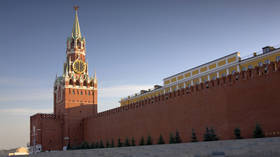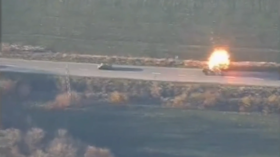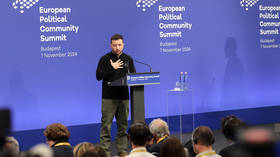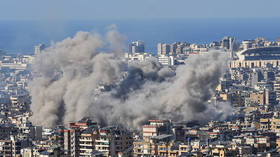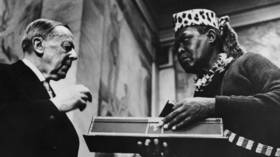Empty towns made the most depressing impression – Chernobyl liquidator
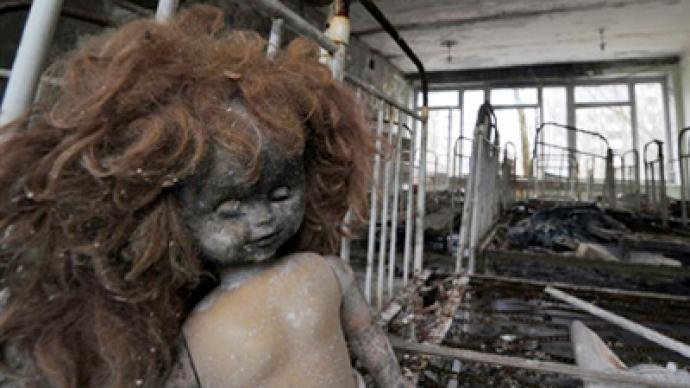
As the world marks the 25th anniversary of the Chernobyl tragedy, RT spoke to Yury Saraev a member of a clean-up crew deployed to the disaster zone immediately after the blast.
RT: Mr. Saraev, thank you for being with us for this interview.Yury Saraev: Thanks for inviting me.RT: Did you know what you were going to face when you received orders to go to Chernobyl?YS: When I received my order I didn’t have a full understanding of what was happening there. We had very scarce information. At the time, I was on a business trip in Budapest, and I was told to leave within the next 24 hours. I flew to Moscow and arrived at the ministry where the chief department head told me to take a special flight from the Bykovo airfield in two hours: “You’ll figure out what happens once you get there.” So I went to the airport immediately. There, I met my friends and colleagues, design engineers, who were taking the same flight to deliver project documents. And we went there together.RT: What information did you have on the way there?YS: I knew that an explosion had happened, and the site was in ruins; that’s about it.RT: Did you realize it was a nuclear catastrophe?YS: I certainly supposed it was.RT: According to this data, during the first six months following the accident, approximately 300,000 people worked in the area of the Chernobyl nuclear power station. What was the most difficult challenge for you as one of the leaders?YS: Everything was difficult. The work tempo was difficult; each day we were facing new tasks that had to be resolved somehow using all our experience. But empty towns and villages were the ones that made the most depressing impression on me. People were evacuated from Chernobyl and the surrounding areas; other nearby villages and towns were abandoned. That was very dismal. It wasn’t even the fact that it was my first time crossing the site in an armored vehicle. Then we were taking measures on relieving the after-effects. I flew over all those ruins in a helicopter. I was also impressed by that, because I, as the director and chief engineer, built the same kind of energy unit from scratch at the Smolensk power station. I participated in the entire process, and it was all done in front of my very eyes. And seeing it all destroyed like that was very difficult. But I repeat, the abandoned towns made the most dismal impression.RT: Three quarters of workers who dug out the 150-meter tunnel under the reactor died before turning 40. Six hundred pilots from the Antoshkin brigade were exposed to strong radiation. Were those human sacrifices really necessary?YS: I’m not familiar with these statistics. As for helicopter pilots and miners, their exposure was within the permissible limits of the emergency standards of that time. Some were exposed more than others, but they were trying to stay within the limits and avoid overexposure. When miners were digging the tunnel I visited it myself. In the tunnel itself, the background radiation was natural. But strong exposure was outside where the mine cars were taken up to unload. Together with the chemical troops that were brought to the sight we attempted deactivating the tunnel’s orifice to reduce the irradiation. As for justifying, any sacrifices were not justified. But we were doing our utmost to keep the number of victims as low as possible in those conditions.RT: Were you apprehensive about another possible explosion?YS: Yes, late April and early May we did have such apprehension. By the way, the tunnel that you mentioned was intended to prevent further explosions. We assumed that without cooling, the remaining nuclear fuel in the reactors could heat up and cause an uncontrollable chain reaction; that it would melt the foundation plate of the reactor’s main body, and go down to the ground. Therefore the decision was made to dig that tunnel urgently and to establish the cooling system under the foundation plate.RT: What is Chernobyl’s legacy for you? Some people like, for instance, academician Legasov who committed suicide two years later, couldn’t live with it. How would you explain Chernobyl’s legacy?YS: As an atomic energy professional I was primarily very concerned for the subject of atomic energy. I dedicated my whole life to it, and I have always believed as I do now that it’s a rather prominent and necessary way of producing electric power. In proper working conditions, it’s the cleanest energy production in terms of its impact on the environment and mankind. Therefore I was worried that atomic energy would be wound down, and we would return to coal furnaces, to boiler stations in every building, and so on. The way it used to be in the 1950s and 60s.RT: When the Chernobyl catastrophe happened, the information on the explosion was publicized late, which resulted in the loss of many lives. Practically the same thing happened in Fukushima. They worked very hard to conceal data on the explosion and to keep it from becoming public. Can we now believe nuclear experts, and do we know everything about Fukushima today?YS: Under such circumstances, it’s impossible to know everything up to every tiny detail. And we should believe the information we get. But those responsible for this information may also be spilling it partially.RT: Why can’t we disclose all the facts and make them public?Facts differ. Sometimes, it’s possible to present them in a way that will sow panic among the population, and that is fraught with harder consequences than the accident itself. That is why this information should be truthful but well-weighed and its presentation should be proportionate to real actions and the current circumstances.RT: Can you say that at the moment Japan is taking all the adequate measures?YS: It’s hard for me to judge. Just like you, I get all the news from TV. In the first days following the tsunami, great destruction was caused and judging from the news secondary facilities responsible for the station’s operation had been damaged. Those were energy supply units in the first place. But the reactor itself remained undamaged by the tsunami. At that moment, it was necessary to focus all the efforts on resuming energy supplies to the reactor’s cooling system. Unfortunately, that wasn’t done on time, and the whole process became protracted and delayed. I think that only ten days after the tsunami, the Japanese started supplying water to the cooling system from hoses and fire-hose barrels.That was ineffective and even harmful. But resuming energy supply and restoring the cooling system’s normal operation was the priority task for the liquidators. Unfortunately, they lost time. Had they done that, the damage wouldn’t have gone further than steam discharges, and that would have been the end of it like at the Three Miles station in the United States. But since the reactor’s active zone was left without cooling, temperatures kept rising. As a result, a fuel meltdown occurred. It was followed by hydrogenous blasts, the depressurization of the reactor’s containment and, consequently, discharges of not only vaporous or gaseous radioactive materials but elements of nuclear fuel into the atmosphere.RT: The Fukushima disaster has been followed by a barrage of criticism towards nuclear energy. Should we continue developing it or would it be better to give it up? Can nuclear energy be 100% safe?YS: No human activity can be absolutely safe. This concerns any kind of activity, including political and public activities, in any society. So whatever people do should be considered from the point of view of safety. But as science and technology progresses, machines become more advanced and complicated. We develop new forms of energy which used to be unknown and unclear in the past. That calls for profound scientific research and measures in the stages of development, design and construction. We can live with it and we should trust it.RT: Looking back into the past, what would you have done differently in Chernobyl 25 years ago?YS: What could have been done differently? It’s hard for me to say. Today, after 25 years have passed, I think that everything that was done at that time was right and rational. It was unnecessary to attract so many human resources to the disaster area. We could have done the job with fewer people, if at that time we had known what to do and how to do it. Some decisions of the State Commission to carry out certain works which later turned out to be unnecessary were also superfluous. You’ve just mentioned a tunnel for miners. But those were attempts to secure ourselves from worse troubles and they were justified.The people who did that heroically did a very big job. That is why as experts began understanding the degree of hazard, they adjusted the works that were carried out at the Chernobyl nuclear power station. Until late June 1986, the radioactive background had been high at the entire site within a range of five kilometers.It was very difficult to approach the site without changing transport. But in June, when experts had obtained clarity with regards to what was left in the damaged reactor and how they should act, the solution was simple, difficult but simple: helicopters were dropping 800 cubic meters of seizing agents on the damaged reactor for 72 hours. That fixed the radioactive dust and prevented it from rising from the reactor along a ventilation pipe that was 150 meters away. Natural circulation pulled off all that dust and dispersed it through the neighborhood. Naturally, we were breathing in that dust. We had to suppress all that.When the operation was completed, the radioactive level at the entire facility dropped 400 times. That not only helped the liquidators to approach the station and carry out deactivation with fewer expenses. It also enabled them to climb on the damaged reactor’s roof to clear away the radioactive discharges on the top.RT: What’s the situation in Chernobyl now? I’ve heard that the containment built over the fourth damaged power unit is gradually deteriorating. What’s going on there?YS: First of all, there’s constant engineering observation over the state of this containment. Sensors have been installed in all parts of the fourth unit that measure the containment’s destruction. This observation is constant. As far as I know, there hasn’t been any significant destruction of the containment. Like at any construction facility, there are sinkages and pockets. But there’s nothing catastrophic.Second, there are some radioactive discharges but they can easily be measured. The dynamics of these discharges are also under control. I don’t think there’s a threat that the containment is deteriorating. It was built at a very high engineering level. It has thick walls with a high degree of safety. Overhead covers were also built. Moreover, walls and overhead covers were built around the damaged reactor unit, while ferrous concrete was pumped inside the reactor. Helicopters dropped metal fittings inside the reactor, while pumps pumped in liquid ferrous concrete. In fact, they filled everything there, though some minor cavities were certainly left.All in all, liquidators used over 200,000 cubic meters of concrete. By comparison, the construction of the reactor of the first power unit required 420,000 cubic meters of concrete. Almost half of that amount was pumped into the reactor, and that ferrous concrete lump is resting inside the reactor in its original form.RT: Thank you very much for this interview.YS: You are welcome.


